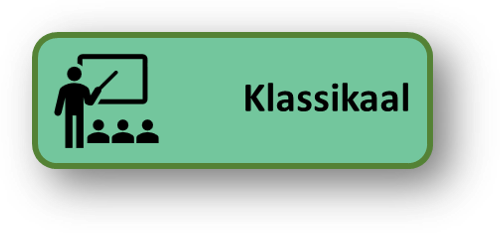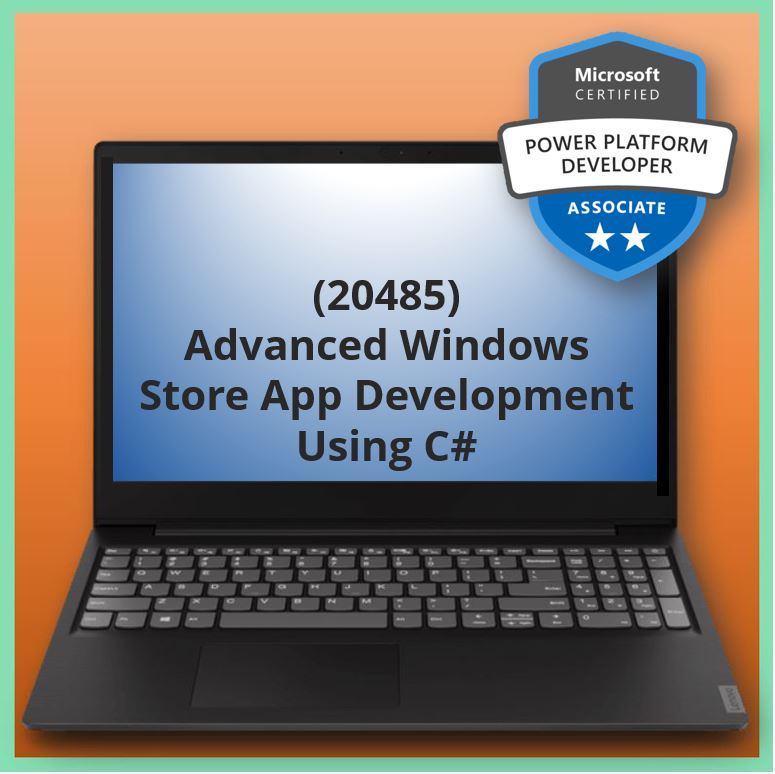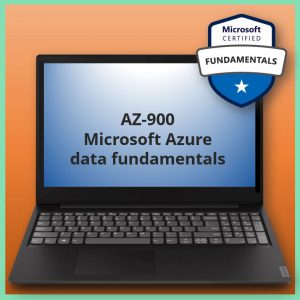Aangeboden leervormen


Advanced Windows Store App Development Using C# (20485)
Course Description
In this course the students will learn the more advanced programming skills and techniques that they can use to optimize their Windows Store app and differentiate their app from other apps in the Windows Store. These advanced skills and techniques include a combination of both design and development skills. The students will also learn about supporting the apps that they have published to the Windows Store.
At Course Completion
After completing this course, students will be able to:
• Add animations and transitions in a Windows Store app to improve the user experience.
• Localize the Windows Store app UI.
• Brand the Windows Store app and improve the loading experience with a splash screen.
• Use various storage mechanisms, choose a suitable caching strategy for their Windows Store app, and use advanced file access methods.
• Create custom controls, extend templated controls, and create and consume WinMD components.
• Implement the Print and Settings contracts and the Play To API.
• Work with the Push Notification Service (WNS).
• Capture media with the camera and microphone.
• Create and consume background tasks.
• Discover device capabilities, interact with devices, and act upon sensor data.
• Implement Windows Store trial licensing and in-app purchasing and advertising.
• Understand how to manage Windows authentication and web authentication in Windows Store apps.
• Diagnose problems and monitor application behavior using tracing and profiling tools and APIs.

Voor wie
Programma
Module 1: Windows Store Apps Essentials
This module provides a review of the essential Windows Store app features.
Lessons
· Review Windows 8 App Essentials – Presentation
· Review Windows 8 App Essentials – Under the Hood
After completing this module, students will be able to:
· Describe basic Windows Store app concepts related to the app presentation.
· Describe basic Windows Store app concepts related to integration with the Windows 8 ecosystem.
Module 2: Implementing Animations and Transitions
This module explains how to add animations and transitions to improve the user experience using the VisualStateManager and control templates.
Lessons
· Using Animation
· Working with Transitions and Transformations
Lab : Implementing Animations and Transitions
· Creating Animations in a Windows Store App
· Creating Transitions and Transformations in a Windows Store App
After completing this module, students will be able to:
· Describe the built-in WinRT animation library and Storyboards.
· Apply transitions and transformations.
Module 3: Implementing Globalization and Localization
This module explains how to localize Windows Store app user interface.
Lessons
· Working with Resource Files
· Implementing Culture-Specific Formatting
Lab : Implementing Globalization and Localization
· Create and Consume Resource Files
· Apply Culture-Specific Formatting
After completing this module, students will be able to:
· Create and consume localized resources.
· Apply language-specific formatting for multi-lingual application.
Module 4: Branding and a Seamless User Interface
This module explains how to brand Windows Store app and improve the loading experience with a splash screen.
Lessons
· Customizing the Splash Screen
· Differentiate your app with branding
Lab : Branding and a Seamless User Interface
· Create a Customized Splash Screen
· Branding a Windows Store App
After completing this module, students will be able to:
· Create and present a successful splash screen.
· Differentiate Windows Store apps with branding.
Module 5: Advanced Data Scenarios in a Windows Store App
This module explains how to use various storage mechanisms, choose a suitable caching strategy for an app, and use advanced file access methods.
Lessons
· Windows Store App Storage Options
· Implementing Data Caching
· Advanced File Functionality
Lab : Caching Data
· Cache Data
After completing this module, students will be able to:
· Describe the storage mechanisms available to Windows Store apps.
Module 6: Creating Reusable Controls and Components
This module explains how to create custom controls, extend templated controls, and create and consume WinMD components.
Lessons
· Creating Custom Controls
· Extending Existing Controls
· Creating and Consuming WinMD Components
Lab : Creating Reusable Controls and Components
· Create and Use a Custom Control
· Consume a WinMD Component
After completing this module, students will be able to:
· Create reusable custom controls.
· Create and extend templated controls.
· Create and consume a WinMD component.
Module 7: Implementing Advanced Contract Scenarios
This module explains how to implement the Print and Settings contracts and the Play To API.
Lessons
· The Print Contract
· The Play To Contract
Lab : Printing
· Print a single page
· Print multiple pages
After completing this module, students will be able to:
· Print by using the print contract
· Describe the Play To API.
Module 8: The Windows Push Notification Service (WNS)
This module explains how to work with the Push Notification Service (WNS).
Lessons
· The Push Notification Service (WNS)
· Communicating with the Push Notification Service (WNS)
Lab : The Windows Push Notification Service (WNS)
· Manage a Windows Notification Service (WNS) Channel
After completing this module, students will be able to:
· Describe the Push Notification Service (WNS).
· Work with push notifications.
Module 9: Capturing Media
This module explains how to capture media with the camera and microphone.
Lessons
· Using CameraCaptureUI to Capture Pictures, Videos or Audio
· Using MediaCapture to Capture Pictures, Video, or Audio
Lab : Capturing Media
· Capture video using the CameraCaptureUI API
· Capture image using the MediaCapture API
After completing this module, students will be able to:
· Use the CameraCaptureUI API.
· Use the MediaCapture API.
Module 10: Background Tasks
This module explains how to create and consume background tasks.
Lessons
· Creating Background Tasks
· Consuming Background Tasks in a Windows Store App
Lab : Background Tasks
· Create and Consume a Background Task
· Consume a Background Task
After completing this module, students will be able to:
· Create background tasks.
· Consume background tasks.
Module 11: Working with Sensors and DevicesThis module explains how to discover device capabilities, interact with devices, and act upon sensor data.
Lessons
· Working with Sensors
· Working with Devices
Lab : Working with Sensors and Devices
· Use the orientation sensor
· Use location services
After completing this module, students will be able to:
· Discover sensors, test their availability, and handle sensor events.
· Discover device availability and enumerate d and their capabilities and properties, and use them.
Module 12: Generating Revenue with your App
This module explains how to generate revenue with Windows Store apps using trial licensing and in-app purchasing and advertising.
Lessons
· Implementing Trial Functionality in a Windows Store App
· Implement In-App Purchases
· Advertising in a Windows Store App
Lab : Generating Revenue with your App
· Use Windows.Store Classes to Support Trial App Conversion
· Implement In-App Purchase in an App
After completing this module, students will be able to:
· Implement trial functionality and transition to a full license.
· Implement in-app purchases.
· Implement advertising functionality.
Module 13: Securing Windows Store App Data
This module explains how to manage Windows authentication and web authentication in Windows 8 apps.
Lessons
· Managing Windows Authentication
· Managing Web Authentication
· Encryption in Windows Store Apps
Lab : Securing Windows 8 App Data
· Encrypt User Information
· Use ACS Authentication
After completing this module, students will be able to:
· Authenticate using Windows Live Authentication.
· Authenticate using web authentication protocols.
· Encrypt data by using the Windows.Security.Cryptography
Module 14: Tracing and Profiling Windows Store Apps
This module explains how to diagnose problems and monitor application behavior using tracing and profiling tools and APIs.
Lessons
· Tracing a Windows Store App
· Profiling a Windows Store App
After completing this module, students will be able to:
· Trace Windows Store apps.
· Profile Windows Store apps.
Voorkennis
Before attending this course, students must have:
· 6 – 12 months experience programming in HTML5
· 3 – 6 months experience using Visual Studio 2012 (including experience using Windows 8's preview builds)
· 1 month of experience working on Windows 8 apps
Examen
70-485 Advanced Windows Store App Development Using C#
Duur training
Klassikaal: 4 dagen
Open Leercentrum: 5 dagen







